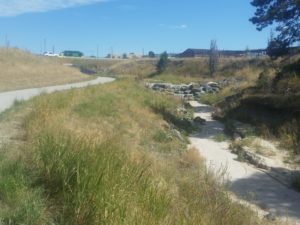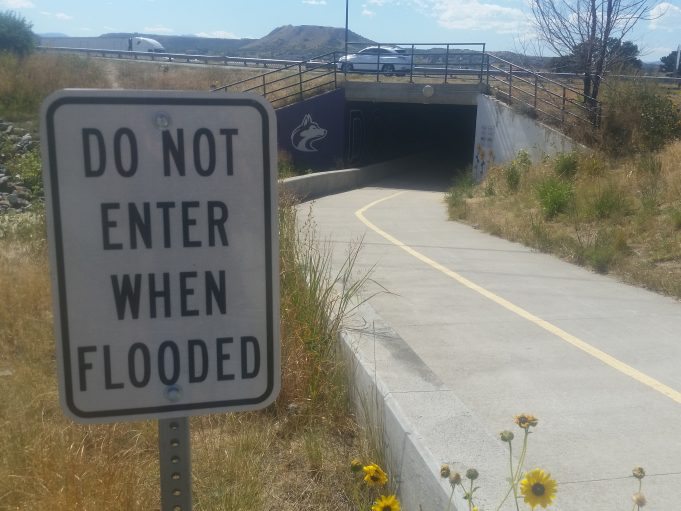Early Castle Rock history is filled with accounts of undocumented ‘hearsay’ passed down from the mouths of the early homesteaders who settled here. Interestingly, some of these local legends have stood the test of time, even without any hard documentation to either prove or disprove that they ever happened.
Take for instance the story surrounding the area known as ‘Hangman’s Gulch.’ It’s a 1.5-mile, paved trail that runs from Front Street to the Castle Rock Recreation Center. The area has carried a story that has been passed down for over 125 years…

In hopes of finding some answers to my questions, a visit was made to the Philip S. Miller Library. Inside the library, I spoke with Shaun Boyd, Archivist at the Douglas County History Research Center headquarters.
Years back, she had done some snooping of her own regarding the roots of stories about the trail. “I wrote an article about Hangman’s Gulch for a local paper in the late 1990s,” she said.
In it, she told of her discovery of the legend in a book titled “Douglas County: A Historical Journey” by Josephine L. Marr. That author had in turn taken the story from an issue of Colorado Magazine, published in 1947.
The magazine’s writer, Vauna Schultz, had originally documented the story from and interview with Albert Dakan, who was only three when his family moved to Castle Rock 1870. Dakan recounted the story to her from his parents, who had first heard it from early settlers they were acquainted with.

Boyd’s research drew from his story that dated back to 1867 (before Castle Rock was settled). He told of hearing about homesteader, from along East Plum Creek, who had been murdered by two men passing through the county.
The next day, the settler’s body was discovered by neighbors and the murderers were tracked to the area around Palmer Lake. Upon being searched, several articles belonging to the murdered man were discovered in their possession.
After a confession was noted, one of the men became violent and the posse captured and hung him from a nearby tree. The second man was taken just north of Castle Rock for a short trial and sentenced to hang.
Buried in a gulch (now called Hangman’s Gulch), a body resurfaced a few years later when one of the men’s graves was washed out by a flood. It was told to Dakan that the skeleton found was put together to be used by a local public school science class until the building burned down in the 1880’s.
For Boyd, the facts surrounding ‘Hangman’s Gulch’ leaves several holes in the story, including; a lack of names, why they took the accused murderer to Castle Rock instead of the then county seat of Franktown, the wrong date for the school burning down and no documented mention of the hanging itself–which would have been a big deal.
So while there may be a kernel of truth (or not) behind the name of ‘Hangman’s Gulch,’ the legend might remain just that. Rumor or not, I think all would agree it makes for an interesting tale as ‘All Hallows Eve’ approaches this month and residents walk or ride along the trail.
General Information:
Hangman’s Gulch Trail
Length: 1 mile
Difficulty: Easy
Surface: 10-foot wide concrete trail
Parking: Castle Rock Recreation Center
Trail access points are near the west side of the Castle Rock Recreation Center and by Woodlands Boulevard, on the north side of Douglas County HS.













